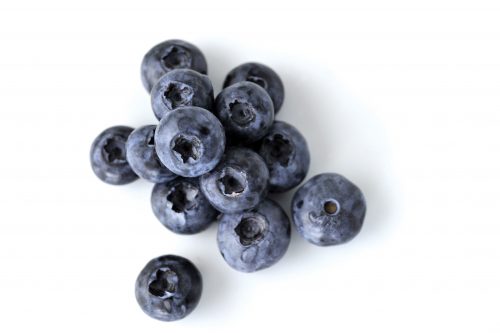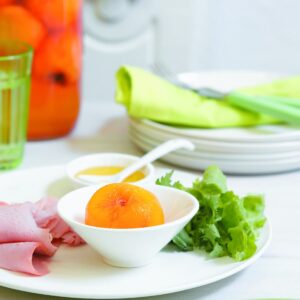
Blueberries
These natives of North America have been commercially grown in New Zealand since the 1980s and about 80 per cent of the Kiwi crop is produced in the Waikato. The berries take their name from their skin — the blue comes from antioxidants called anthocyanins — but the flesh is green.
Blueberries are a good source of polyphenols, especially the anthocyanins, which have been shown to have high antioxidant capacity. Eating blueberries has been linked to improving cardio-vascular risk factors, such as reducing blood glucose, and to significantly improving memory in older adults. Blueberries are low in energy so they make a great snack, with one cup having only 400kJ.
Store
Keep berries in the fridge but don’t let them get too cold. Handle them carefully and don’t wash off the protective bloom (the powdery coating) until you are ready to use them.
Buy
Blueberry season in New Zealand runs from late October to April. Look for berries that are firm, dry, plump and smooth. Colour is more important than size — choose berries that are deep purple to blue/black. Red ones aren’t ripe so they’ll taste a little sour, although they’ll still be fine in cooking or baking.
Cooking tips
- Frozen berries make a great lolly-style treat for kids.
- If you don’t want your blueberries to sink to the bottom of the pan when baking cakes or muffins, pour in half the batter followed by half the berries then layer the remaining batter and berries.
Recipe ideas
Berry clafoutis
Semolina cake with blueberry compote
Asparagus
There’s nothing quite like the first asparagus of spring and we Kiwis love to make the most of our local season, which starts in September and tails off in December. This vege with a colourful history is enjoyed around the globe. Asparagus was a favourite of the ancient Greeks who also used it to treat a wide range of ailments.
The Romans loved it too and it’s said that in France it was served before weddings because it was thought to be an aphrodisiac.
Thanks to our genes, some of us have pungent urine dubbed ‘asparagus pee’ and others can smell it, but the two groups aren’t always connected.
Asparagus, once known as sparrow grass, comes in three colours — green, purple and white. The latter is pale because it is grown out of the sun (dirt is piled around the spears) and cannot produce chlorophyll. Green asparagus is by far the most common in New Zealand, but the purple variety is being used more and more. This low-kilojoule vege is a rich source of folate and adds useful amounts of fibre and vitamin E to our diets.
Store
Because of its high water content, asparagus dries out easily. Keep spears in the fridge with the cut ends wrapped in wet paper towels, or stand them in a glass jar with 1-2cm of water. They’ll keep for up to a week but will taste better if eaten within a couple of days.
Buy
Pick spears that are green and firm rather than rubbery. When it’s time to use them, snap off the ends. Purple spears and thin green ones can be eaten raw in salads; thicker green ones are best blanched or lightly cooked. The spears can be used in almost any dish — stir-fries, quiches, risottos, pies, soups and of course, in rolls.
Cooking tips
- Take asparagus rolls to the next level by using wholemeal bread instead of white and by adding a sliver of smoked salmon and a smear of mayonnaise.
- Toss spears in balsamic vinegar and then onto the barbecue hotplate. Cook until tender and slightly caramelised – it won’t take long.
- Don’t discount big, fat spears. They’re better for roasting.
Recipe idea
Article sources and references
- Asparagus: Sivakumaran S et al. 2013. The Concise New Zealand Food Composition Tables, 10th ed. Palmerston North: The New Zealand Institute for Plant & Food Research Limited and Ministry of Healthhttps://www.foodcomposition.co.nz/downloads/concise-10-edition.pdf
- Blueberries: Stull AJ et al. 2010. Bioactives in blueberries improve insulin sensitivity in obese, insulin-resistant men and women. Journal of Nutrition 140:1764-68https://www.ncbi.nlm.nih.gov/pubmed/20724487
- Joseph J A et al. 2005. Reversing the deleterious effects of aging on neuronal communication and behaviour: beneficial properties of fruit polyphenolic compounds. American Journal of Clinical Nutrition 81:313S-6Shttps://www.ncbi.nlm.nih.gov/pubmed/15640496
- Krikorian R et al. 2010. Blueberry supplementation improves memory in older adults. Journal of Agricultural and Food Chemistry 58:3996-4000https://www.ncbi.nlm.nih.gov/pubmed/20047325
- McDougall GJ & Stewart D. 2012. Berries and health: A review of the evidence. Environmental and Biochemical Sciences Group, The James Hutton Institute, UK.http://archive.northsearegion.eu/files/repository/20131219103705_UK-Enclosure53_sep12.pdf
- Devore EE et al. 2012 Dietary intakes of berries and flavonoids in relation to cognitive decline. Annals of Neurology 72:135-43https://www.ncbi.nlm.nih.gov/pubmed/22535616
- Basu A et al. 2010. Berries: emerging impact on cardiovascular health. Nutrition Reviews 68:168-77https://www.ncbi.nlm.nih.gov/pubmed/20384847
www.healthyfood.com










